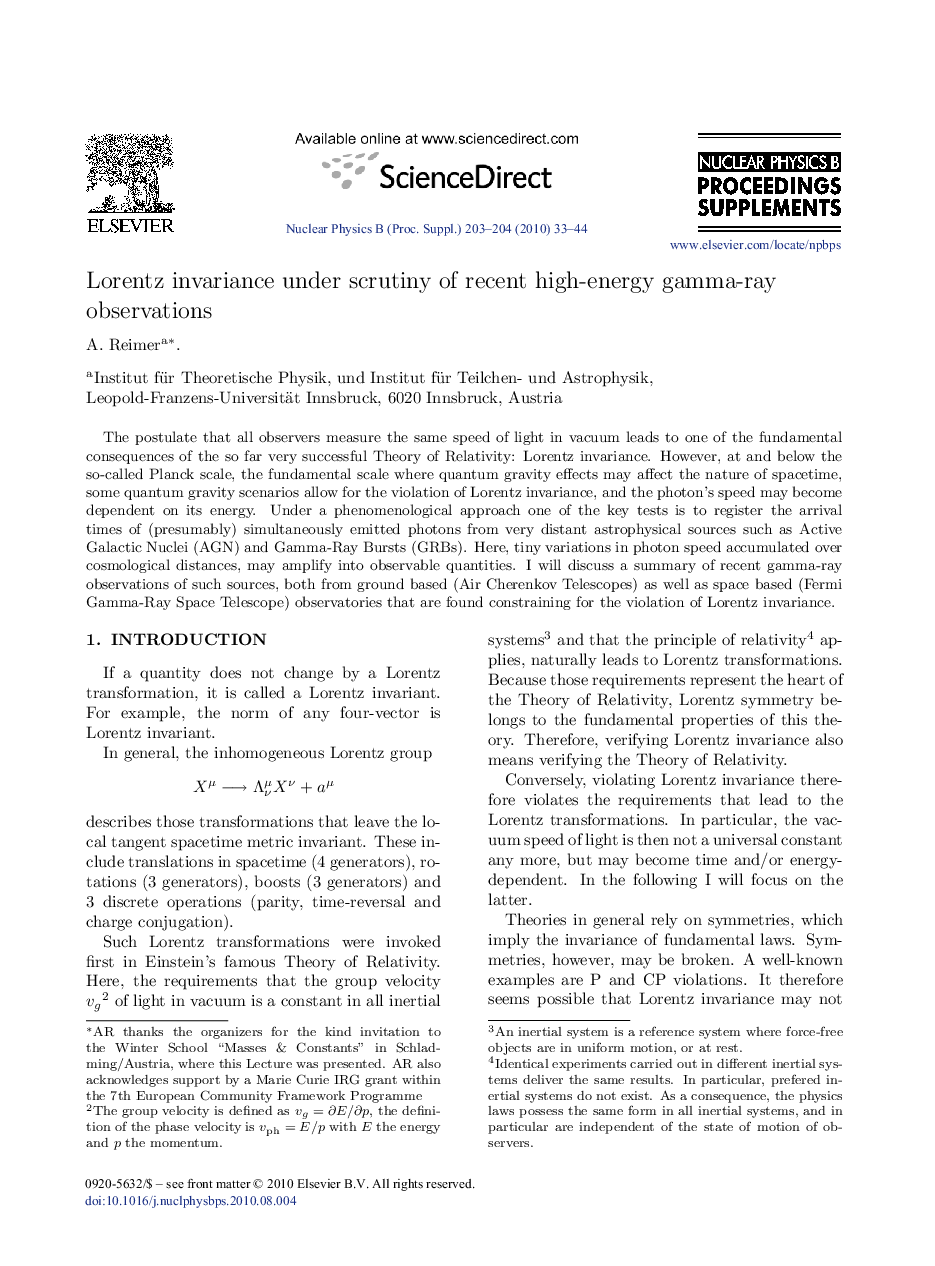| Article ID | Journal | Published Year | Pages | File Type |
|---|---|---|---|---|
| 1849129 | Nuclear Physics B - Proceedings Supplements | 2010 | 12 Pages |
The postulate that all observers measure the same speed of light in vacuum leads to one of the fundamental consequences of the so far very successful Theory of Relativity: Lorentz invariance. However, at and below the so-called Planck scale, the fundamental scale where quantum gravity effects may affect the nature of spacetime, some quantum gravity scenarios allow for the violation of Lorentz invariance, and the photon's speed may become dependent on its energy. Under a phenomenological approach one of the key tests is to register the arrival times of (presumably) simultaneously emitted photons from very distant astrophysical sources such as Active Galactic Nuclei (AGN) and Gamma-Ray Bursts (GRBs). Here, tiny variations in photon speed accumulated over cosmological distances, may amplify into observable quantities. I will discuss a summary of recent gamma-ray observations of such sources, both from ground based (Air Cherenkov Telescopes) as well as space based (Fermi Gamma-Ray Space Telescope) observatories that are found constraining for the violation of Lorentz invariance.
